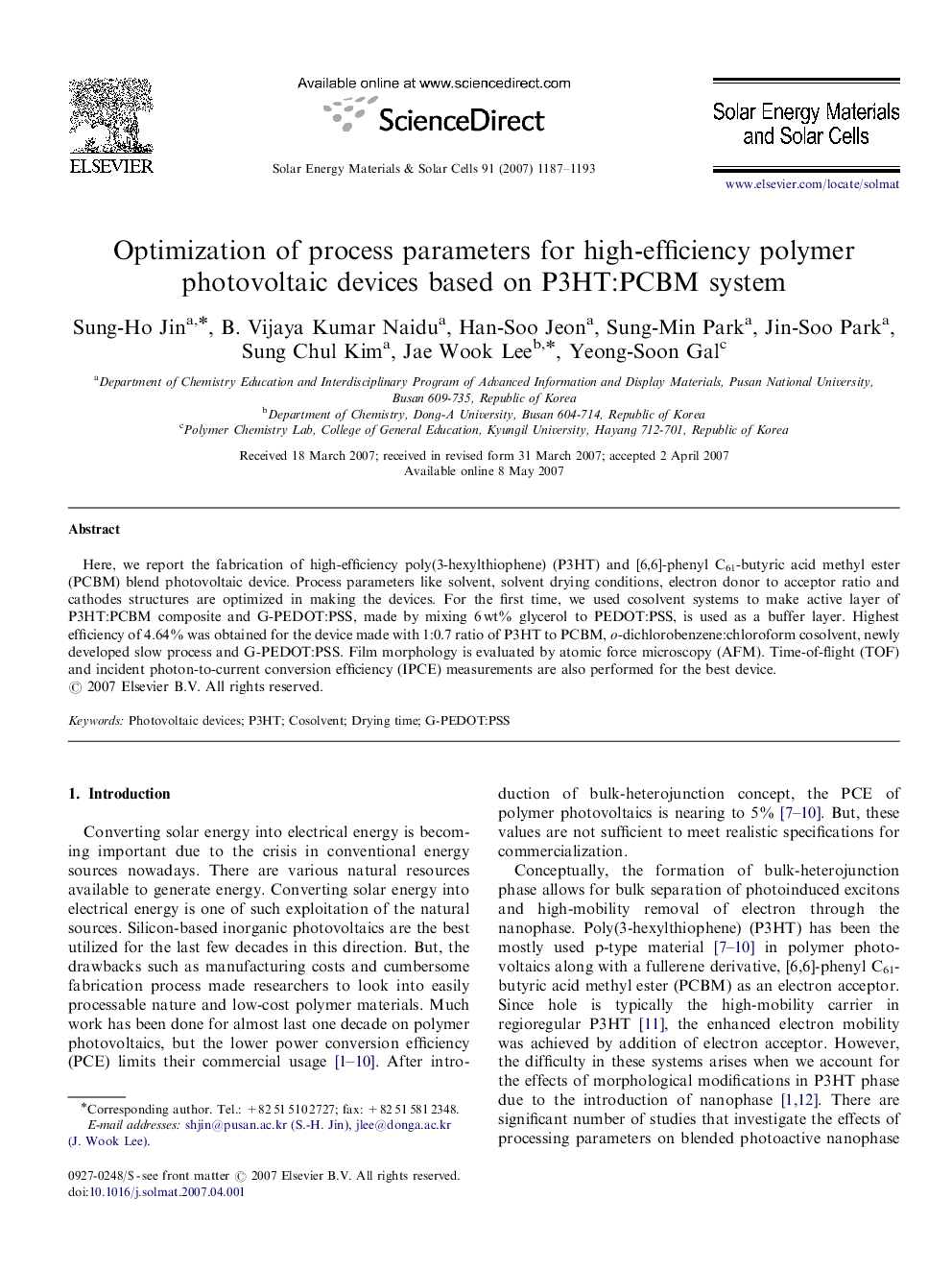| Article ID | Journal | Published Year | Pages | File Type |
|---|---|---|---|---|
| 81056 | Solar Energy Materials and Solar Cells | 2007 | 7 Pages |
Here, we report the fabrication of high-efficiency poly(3-hexylthiophene) (P3HT) and [6,6]-phenyl C61-butyric acid methyl ester (PCBM) blend photovoltaic device. Process parameters like solvent, solvent drying conditions, electron donor to acceptor ratio and cathodes structures are optimized in making the devices. For the first time, we used cosolvent systems to make active layer of P3HT:PCBM composite and G-PEDOT:PSS, made by mixing 6 wt% glycerol to PEDOT:PSS, is used as a buffer layer. Highest efficiency of 4.64% was obtained for the device made with 1:0.7 ratio of P3HT to PCBM, o-dichlorobenzene:chloroform cosolvent, newly developed slow process and G-PEDOT:PSS. Film morphology is evaluated by atomic force microscopy (AFM). Time-of-flight (TOF) and incident photon-to-current conversion efficiency (IPCE) measurements are also performed for the best device.
